(Page créée avec « But 5 panels were too cumbersome for our trailer + we already had 1 solar panel of 330W. '''We''' '''have chosen 3 panels of 330W for a total power of 990W'''. ») |
(Page créée avec « Generally, the voltage of a battery pack is determined in accordance with the power of the SP: ») |
||
| Ligne 259 : | Ligne 259 : | ||
===='''Batteries''': ==== | ===='''Batteries''': ==== | ||
| − | + | Generally, the voltage of a battery pack is determined in accordance with the power of the SP: | |
*<500W: 12V | *<500W: 12V | ||
Version du 26 mai 2023 à 02:39
Description
This tutorial presents the sizing and construction of an electrical system for a solar generator (1 kWp or ‘kilowatt peak’) which can be moved by bicycle. This structure was designed to fit on the CHARRETTE, an assisted trailer designed by the Véloma association whose plans are freely available.
Sommaire
Sommaire
- 1 Description
- 2 Sommaire
- 3 Introduction
- 4 Étape 1 - Evaluate your needs and identify the most suitable energy sources.
- 5 Étape 2 - Calculate your daily electrical needs
- 6 Étape 3 - Parameters of principal elements
- 7 Étape 4 - Sizing of principal elements
- 8 Étape 5 - Dimensionnement des protections électriques
- 9 Étape 6 - Wiring sizing
- 10 Notes et références
- 11 Commentaires
Introduction
This trailer is a functional demonstration designed as a part of the Scholar Grid project.
Supported and piloted by the Fondation Schneider Electric in partnership with these associations Low-tech Lab,Énergies sans Frontières and Atelier 21, this project intends to investigate innovative solutions to provide affordable and clean electric energy to training centers that train future electricians. The energy systems created by the technical experts and the teachers of the training centers, will be implemented by students and serve as a pedagogical base.
The fields of investigation of this project were the following:
- The recovery and repair of damaged photovoltaic panels.
- The recovery and regeneration of used lead batteries.
- Direct current microgrids.
To test these techniques in real conditions, Low-tech Lab constructed a mobile generator trailer. With the power of 1kW, it combines the repaired second hand solar panels and the regenerated lead batteries. This was designed on the basis of concrete needs: to provide electricity for the Festival Low-tech organized in Concarneau in July of 2022.
Beginning with this concrete case, "the tutorial details the general steps of sizing a photovoltaic installation in self-consumption". The context, the preliminary evaluation of needs and the choice of adapted energy sources are explained in detail in the document "An energy-autonomous Festival?’ In the ‘Files’ section".
This tutorial is addressed to people with a basic level of knowledge in electricity and in the components of photovoltaic installation. If that is not your case, do not hesitate to release the basics via E-leaning of INES (in English) or via the GuidEnR Photovoltaic website. (Links in the ‘Notes and references’ section). Warning: This tutorial does not cover the basic notions of electricity and the associated safety instructions. These manipulations can become very dangerous! It is your responsibility to ensure you work safely.
Matériaux
| Quantity | Designation | New Material Price | Project Material Price (donation, second-hand, reclaimed) | ||||
|---|---|---|---|---|---|---|---|
| 3 | Peimar 330W Solar Pannel | 500 | 105 | ||||
| 1 | Victor Energy Phoenix 24V/1200VA Inverter | 503 | 200 | ||||
| 1 | Schneider Electric Connext 60A/150V MPPT charge controller | 650 | 0 | 12 | Hawker 4PzS240 traction battery - 2V 240Ah | 1980 | 650 |
| 1 | Victron Energy BMV700 battery controller + crimped cable + wall bracket + VE Direct Bluetooth Smart Dongle | 250 | 250 | ||||
| 1 | Fuse MEGA-Fuse 125A / 32V (x5) + Fuse holder MEGA Victron Energy | 33 | 33 | ||||
| 1 | Schneider Electric C120N 125A Circuit Breaker | 320 | 0 | ||||
| 2 | Schneider Electric iC60N 63A Circuit Breaker | 25 | 0 | ||||
| 1 | Schneider Electric Resi9 10A Circuit Breaker | 15 | 0 | ||||
| 1 | Schneider Electric 30mA/40A differential Circuit Breaker | 90 | 0 | ||||
| 16m | 1x4mm² red/black solar cable with MC4 connector | 24 | 0 | ||||
| 1 | Male MC4 Connector | 4 | 0 | ||||
| 1 | Female MC4 Connector | 4 | 0 | ||||
| 6m | Red / blue / green-yellow cable 1x16mm² | 16 | 16 | ||||
| 6 | Tubular battery terminal 16mm²-12 | 4 | 4 | ||||
| 2 | Tubular battery terminal 35mm² - 10 | 2,6 | 2,6 | ||||
| 6 | Gray PG16 cable gland + Washer | 11,5 | 11,5 | ||||
| 6 | Gray PG11 cable gland + Washer | 9,5 | 9,5 | 1 | Bloc multiprise extérieur IP44 | 14 | 14 |
| TOTAL | 4442 € (~4,764.22 $USD) | 1282 € (~1,375.00 $USD) |
Outils
Étape 1 - Evaluate your needs and identify the most suitable energy sources.
The cheapest and cleanest energy is that which we do not produce/consume!
In line with this principle, this approachnégaWatt proposes to rethink our vision of energy by applying a three step approach: Sobriety, Efficiency, then renewable energy. Before sizing a photovoltaic electrical installation, it is necessary to consider several questions:
What are my needs? Which are essential and incompressible? Is electricity the most efficient way to meet all these needs?
Detail on these questions applied to the case of our Festival is available in the "Files" tab located above.
To materialize the electricity consumption of everyday equipment and possibly be able to eventually prioritize, the open-source game REVOLT translates these consumptions in pedaling time.
Étape 2 - Calculate your daily electrical needs
Me: "'This step is the most important of an autonomous photovoltaic sizing'". It will have a big influence on the price, autonomy, and the durability of the installation.
This step will permit you to see where your "'large electrical consumption items"' are located and to make choices accordingly. (Ex: An electric oven demands 5000W of power. Is electrical energy the most pertinent to respond to this need?)
It is recommended to not under estimate your needs and to always consider the worst case!
Example: A rainy day, during a week-end, in winter. The entire family is present. The lights are on 9 hours a day. They want to eat hot food. Lots of activities are happening inside.
Several softwares can help you in sizing a solar installation. We have used the free software CalcPvAutonome developed by David Mercereau. A interface dédiée lets you calculate your daily electrical needs. We came up with what we call an ‘’’Energy audit (simplified).
The principle is simple:
We listed all the equipment being used We indicate their power (In Watts, W) We indicate the duration of their daily use (in hour/day, h/d) We determine if certain equipment is capable of functioning simultaneously The tool gives us a daily energy consumption (in watt per hour by day, W.h/d)
{{Warning l Certain devices do not consume the same quantity of energy all the time. For example, even if a refrigerator is permanently plugged in, it does not consume energy until the interior temperature passes a certain level.
There is also the option to enter the energy consumption manually. For that, you have to measure it! Connect a Wattmeter-Consometer to the equipment for 1 to 7 days to have the actual daily consumption (see image).}}
In the case of our Festival, we have thus evaluated our electrical needs (see image) :
Daily electrical needs: 4080Wh/d
Maximum electrical power need: 177W
We have deliberately chosen to "not fuel the power hungry devices"' "'in energy by electricity"' !
>The kitchen (for 100 people) was made using a wood-burning stove.
> To serve fresh beverages, we have agreed to a partnership with the Concarneau auction that permanently produces ice and stored it in an unplugged freezer (vs.4800Wh/d). In the same way, the beer taps are frozen directly with the ice and stay disconnected (vs 5600Wh/d). |Step_Picture_00=Remorque_g_n_ratrice_solaire_-_Syst_me__lectrique_Screenshot_2022-08-31_at_10-41-01_CalcPvAutonome_Calculer_dimensionner_son_installation_photovolta_que_isol_e_autonome_.png }}
Étape 3 - Parameters of principal elements
Once the energy needs are entered in CalcPVAutonome, several important parameters must be entered for the sizing.
Parameters of Solar Panels (SP):
- Inclination of the SP: The position of the sun in the sky varies in accordance with the seasons (high in the summer, low in the winter). It is therefore recommended to adapt the positions of the SP to be perpendicular to the rays. In France, we recommend 30° of inclination in the summer and 60° in the winter.
- If the SP are attached to the roof, we recommend the position during the worst period of production, winter, so 60°.
- For the trailer, we have chosen 30° because its use is more likely during the summer season. But the incline angle can always be changed on the trailer.
- Orientation of the SP: One should determine the angle of the SP with the sun. If they face south, they should be at 0°. If not, see image.
- Desired autonomy: Will I use my SP all year or punctually? For the trailer, the use will be seasonal, from June to September globally.
- Technology of Solar Panels: Even if the differences are minimal between poly and monocristalin (see comparatif), we have chosen monocristallin because they are the most recent.
Battery Bank Settings
- Number of days of desired autonomy: This represents the number of consecutive days without sun that you can get by. This parameter has a big influence on the capacity of the battery bank and therefore on the installation cost. For the trailer, we have chosen the average duration of a festival over one day, which is 8 hours. This lets us have a battery pack that remains mobile.
- Battery Technology: To choose refer to the tutorial "Operation, maintenance and regeneration of lead acid batteries". Otherwise, leave "auto." by default.
Wiring
If you have an idea about the location of the SP related to local technique, specify these distances. If in doubt, overestimate a little.
Geographic Location:
Specify your location. The average radiation data per month is calculated via the database PVGIS.
Étape 4 - Sizing of principal elements
Once the parameters are entered, we begin the calculation!
CalcPVAutonome Proposes an estimate of necessary material in accordance with these parameters. This is given for information only and must be analyzed. In our case, we have readjusted accordingly with the material already available to us that we used.
Photovoltaic panels :
To satisfy our daily needs of 4080Wh/d, a minimal SP power of 937W is required (detailed calculations done by the software). The software tells us that 5 monocrystalline panels of 190W would work.
But 5 panels were too cumbersome for our trailer + we already had 1 solar panel of 330W. We have chosen 3 panels of 330W for a total power of 990W.
Batteries:
Generally, the voltage of a battery pack is determined in accordance with the power of the SP:
- <500W: 12V
- 500 -1500W: 24V
- >1500W: 48V
Dans notre cas, nous avons 990W de PV, donc la tension finale de notre parc batterie sera de 24V.
Pour permettre une autonomie de 8h (~0,3j), le logiciel calcule la capacité nominale des batteries de 170Ah en C10. (Voir détail calcul en image)
Or, pour assurer la longévité du parc batteries, le courant de charge de celui-ci ne doit pas dépasser 20% de sa capacité nominale. (Voir Fonctionnement, entretien et régénération de batteries au plomb)
Soit: 170 x 20% = 34A.
Or avec 990W de PV le courant de charge est de 990 / 24 = 41,25A.
On peut choisir de brider la production des PV grâce au régulateur de charge, mais généralement on conseille d'augmenter la capacité du parc batteries en conséquence. Donc ici, 41,25 x 100 / 20 = 206Ah.
Ayant trouvé une bonne occasion, nous avons finalement opté pour l'achat d'un parc de batteries de traction régénérées de 240Ah. Il consiste en 12 batteries de 240Ah-2V assemblées en série pour avoir une tension de 24V. Cela fait augmenter notre autonomie à 10h.
Charge Controller :
Les caractéristiques du régulateur de charge sont déterminées en fonction des caractéristiques de courant maximum sortant des PV. Nous avons donc besoin des caractéristiques des PV données par leur fiche technique ou à l'arrière des panneaux. Il faut connaître la "Tension en Circuit Ouvert" (Voc) et l' "Intensité de Court-Circuit" (Isc) des PV.
Dans notre cas, pour chaque panneau : Voc= 40,49V et Isc= 10,25A
Lorsqu'on ajoute les panneaux en série: Voc_tot= 121,5V et Isc_tot= 10,25A
En prenant des marges de sécurité de 20%, un régulateur MPPT 150V 20A aurait pu convenir.
Ayant eu l'occasion de récupérer un régulateur Conext MPPT 150V/60A, nous avons opté pour ce modèle.
Converter - Inverter :
Le choix du convertisseur s'effectue en fonction de la puissance que doit délivrée l'installation (en AC) et en fonction de la tension du parc batterie.
Nous souhaitions pouvoir ponctuellement alimenter des appareils allant jusqu'à 1000W.
Nous avons opté pour un convertisseur Victron 24V/1200VA qui monte en puissance maximum de sortie à 1200W avec des pointes possibles à 2400W.
Battery Monitor
Pour connaitre l'état de charge de nos batteries et en prolonger la durée de vie, nous avons choisi d'utiliser un contrôleur batterie (fortement conseillé).
Étape 5 - Dimensionnement des protections électriques
What Electrical Protection ?
- Des dispositifs de sectionnement et de coupure (disjoncteurs et/ou interrupteur-sectionneur) doivent être installés à différents endroits pour installer et maintenir le système en sécurité :
- Entre les PV et le régulateur de charge
- Entre le régulateur de charge et les batteries
- Entre les batteries et le convertisseur
- Entre les batteries et les charges DC
Ces dispositifs se placent sur les 2 polarités (+ et -)
- Des dispositifs de protection contre les surintensités (fusibles ou disjoncteurs) doivent être installés pour protéger le matériel de conditions de très forts courants :
- En sortie de PV, sur les deux polarités (+ et -), contre les risques de surintensité sous la forme de courant retour. Pas nécessaire, si on a seulement une seule chaine de PV en série.
- En sortie de batterie, sur le +, contre les forts courants de décharge.
Sizing of electrical protections :
Entre les PV et le régulateur de charge :
- Fusibles en sortie de chaque string de PV en série (obligatoire seulement si on a plus d'une string/chaîne de PV, ce qui n'est pas le cas sur la remorque):
- 1,5 Isc_tot< Ifuse < 2,4 Isc_tot
- 1,1Voc_tot < Vfuse
- Disjoncteur ou interrupteur-sectionneur entre les PV et le régulateur de charge
- I> 1,25 Isc
- V >1,15 Voc_tot
Donc pour la remorque, nous avons choisi un disjoncteur respectant ces conditions : - I > 12,8A
- V > 140V
Entre le régulateur de charge, l'onduleur et les batteries:
- Fusible, à placer sur le câble positif, en entrée de la batterie:
- Ifuse > Iop
Iop étant le courant en opération. Il diffère si on est en mode charge ou décharge des batteries :
- En mode charge, il est équivalent au courant maximum fourni par le Régulateur de Charge. Soit, Iop= 60A dans notre cas.
- En mode décharge, il est équivalent au courant maximum tiré par l'onduleur. Soit, Iop= Pmax_inv/ (rendement de l'onduleur *Vbat )= 2400W / (0,97*24V) = 104A
On choisit la valeur maximale donc Ifuse>104 A. Nous avons choisi un fusible MEGA 125A 32V de chez Victron Energy.
- Disjoncteur ou interrupteur-sectionneur:
- Idis > Iop
- Vdis>1,15 Voc_tot
Donc pour la remorque, nous avons choisi un disjoncteur de 125A respectant ces conditions : - I > 104 A
- V > 140 V
Étape 6 - Wiring sizing
Pour éviter des pertes par échauffement, voire des risques d'incendie, il est important de bien dimensionner tous les câbles de l'installation. C'est-à-dire, calculer la section minimale (en mm²) du câble.
La formule est la suivante :
S > ρ*2*L*I / ε*U
For this you need to know:
- Le courant maximal qui va traverser le câble sur le tronçon étudié ( I, en Ampères)
- La tension sur le tronçon étudié (U, en Volt)
- La longueur du câble sur le tronçon étudié (L, en mètres)
- Son matériau et donc sa résistivité (ρ, en Ohm.mm²/m). Pour le cuivre, on prend généralement ρ=0,023 Ω.mm²/m
- Chute de tension maximale autorisée ε. On choisit souvent 1% soit ε=0,01
- Des panneaux solaires au régulateur de charge
- Du régulateur aux batteries
- Du régulateur à l'onduleur
| Entre les PV et le régulateur de charge | Entre le régulateur de charge et les batteries | Entre les batteries et l'onduleur |
|---|---|---|
| S > 0,023*2*4* 10,25 / 121,5*0,01 | S > 0,023*2*1* 1000 / 24*24*0,01 | S > 0,023*2*0,5* 2400 / 24*24*0,01 |
| S> 1,55mm² | S>7,9mm² | S>9,5mm² |
A partir des sections calculées, il convient ensuite de choisir la section commerciale supérieure :
| Entre les PV et le régulateur de charge | Entre le régulateur de charge et les batteries | Entre les batteries et l'onduleur |
|---|---|---|
| S = 2,5mm² | S= 10mm² | S=10 ou 16 mm² |
On peut vérifier les valeurs d'intensité maximale admissible correspondant à ces sections dans des abaques (voir image).
Notes et références
Document rédigé par Guénolé Conrad dans le cadre du projet Scholar Grid. Un projet à l'initiative de la Fondation Schneider Electric avec le support technique d'Energie Sans Frontières, Atelier 21 et du Low-tech Lab
- Pour reprendre en détail les bases, le fonctionnement et le dimensionnement d'une installation solaire autonome, le très bon e-learning de l'INES, l'Institut National de l'Energie Solaire (en anglais) ou le site GuidEnR Photovoltaïque (en français)
- Notions de sécurité électrique et effets sur le corps humain.
- Outil de prédimensionnement d'installation solaire photovoltaïque en autoconsommation conçu par l'INES: AutoCalSol
- En France, pour se former de manière plus professionnelle, l'INES propose des formations sur l'énergie solaire
- Le tutoriel de construction de la structure de soutien des panneaux solaires.
Published
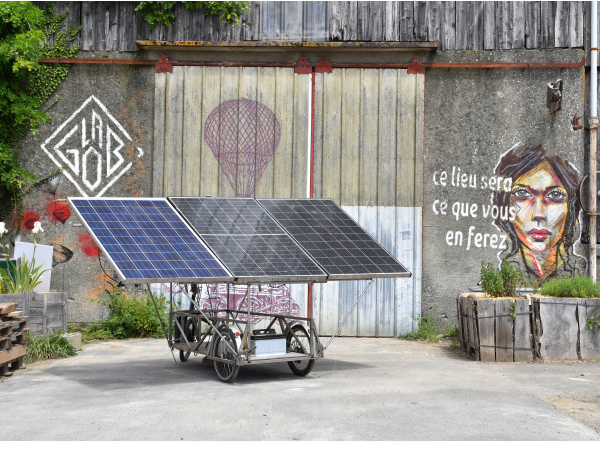
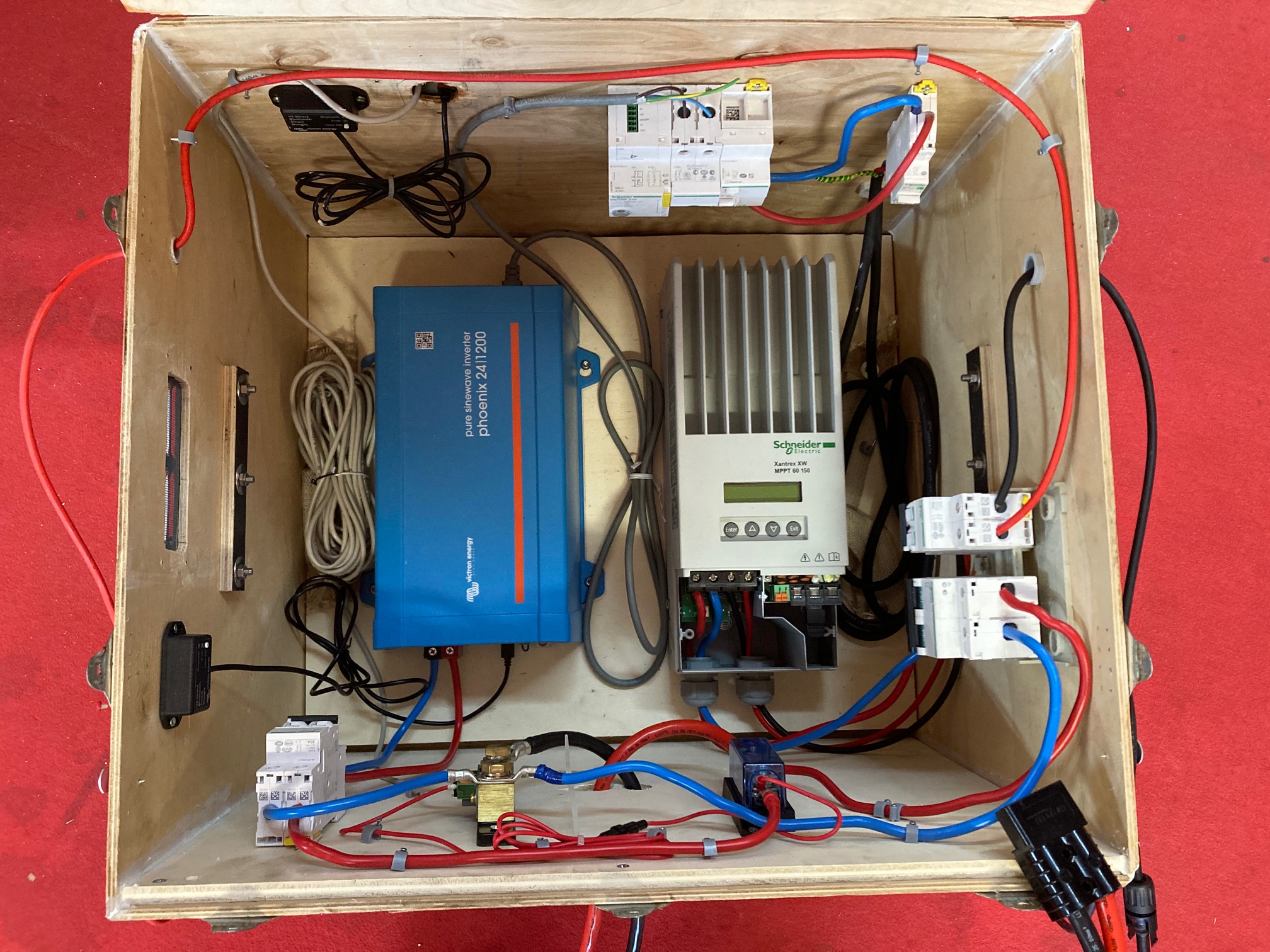
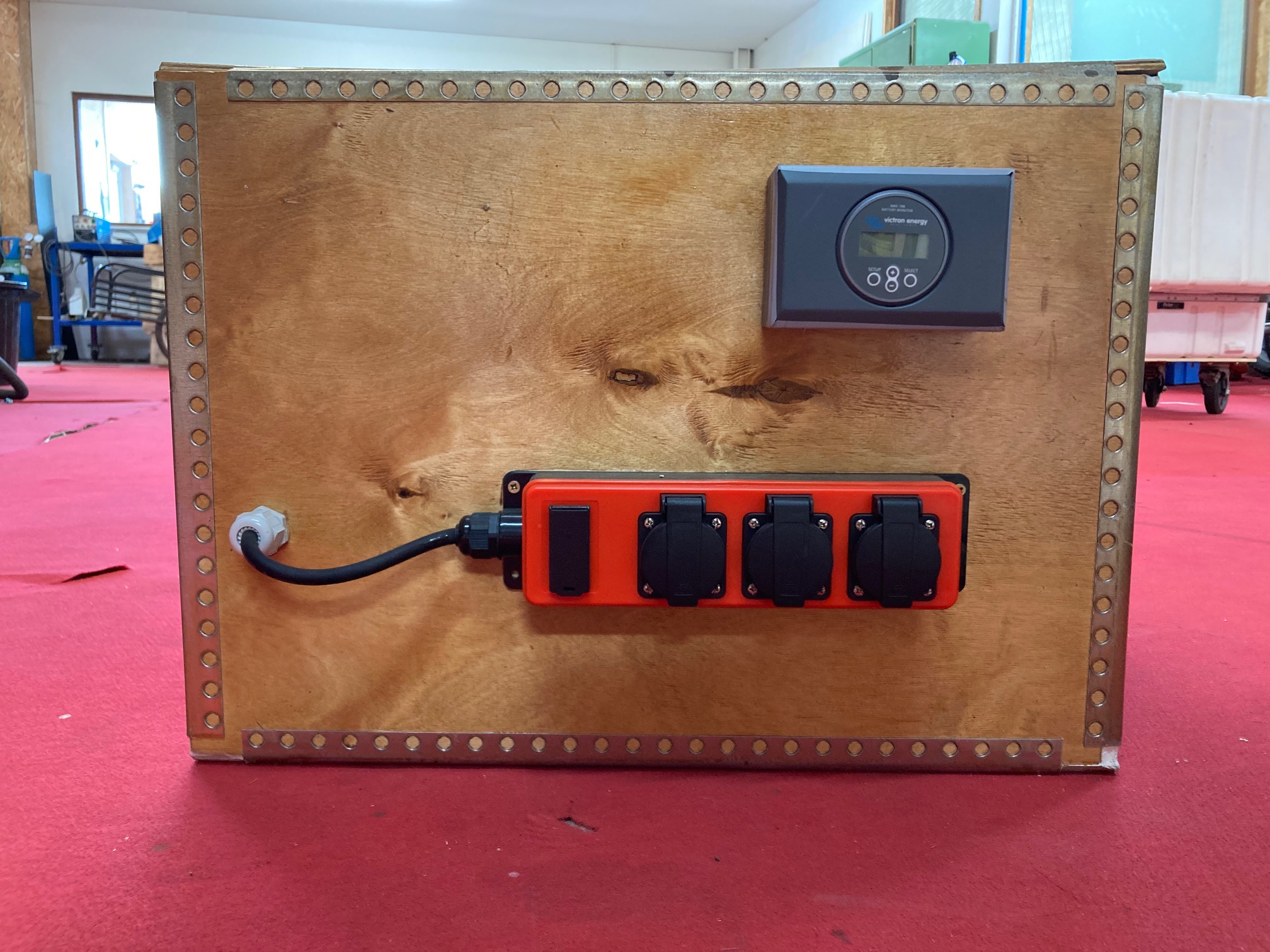
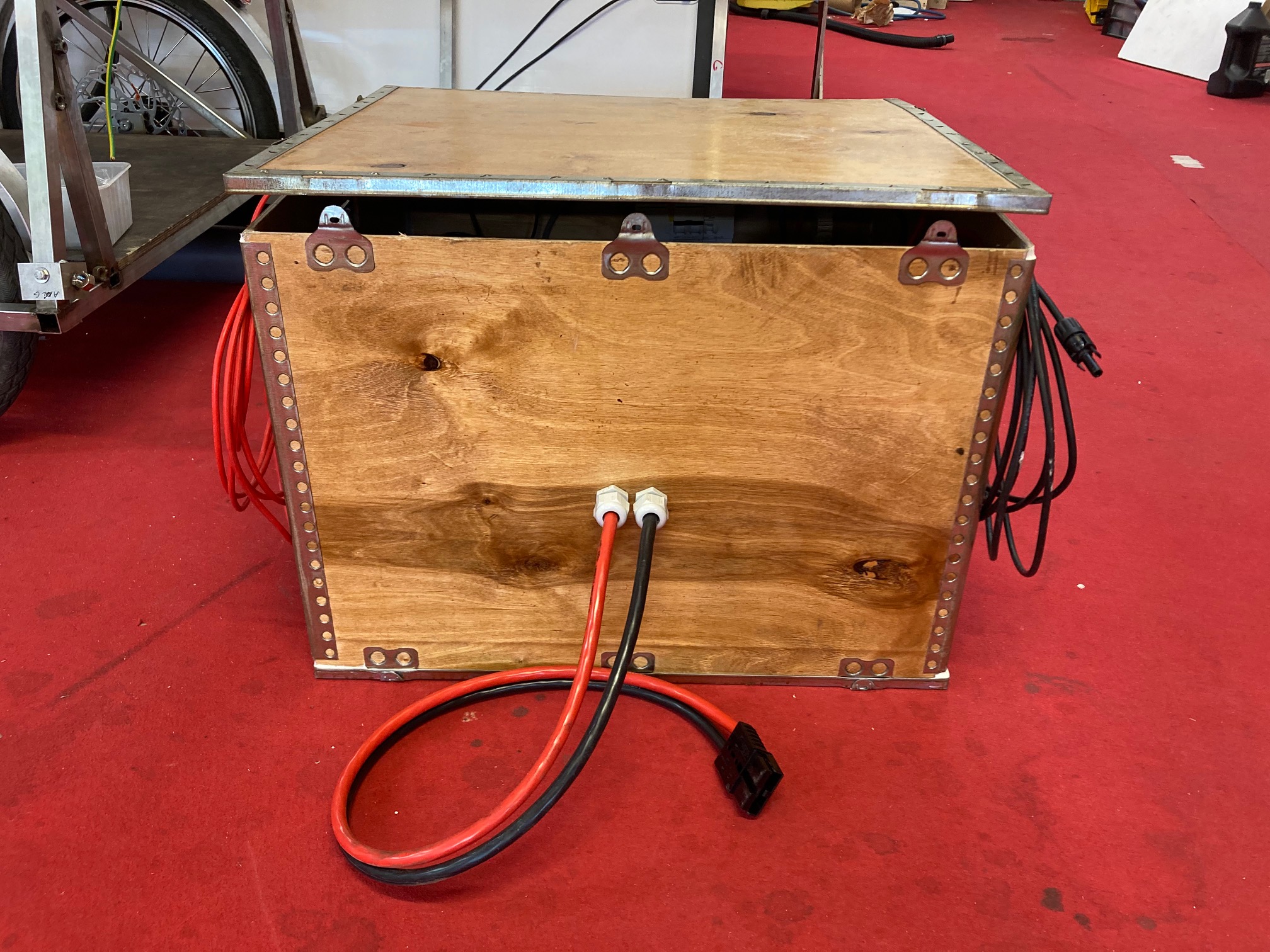
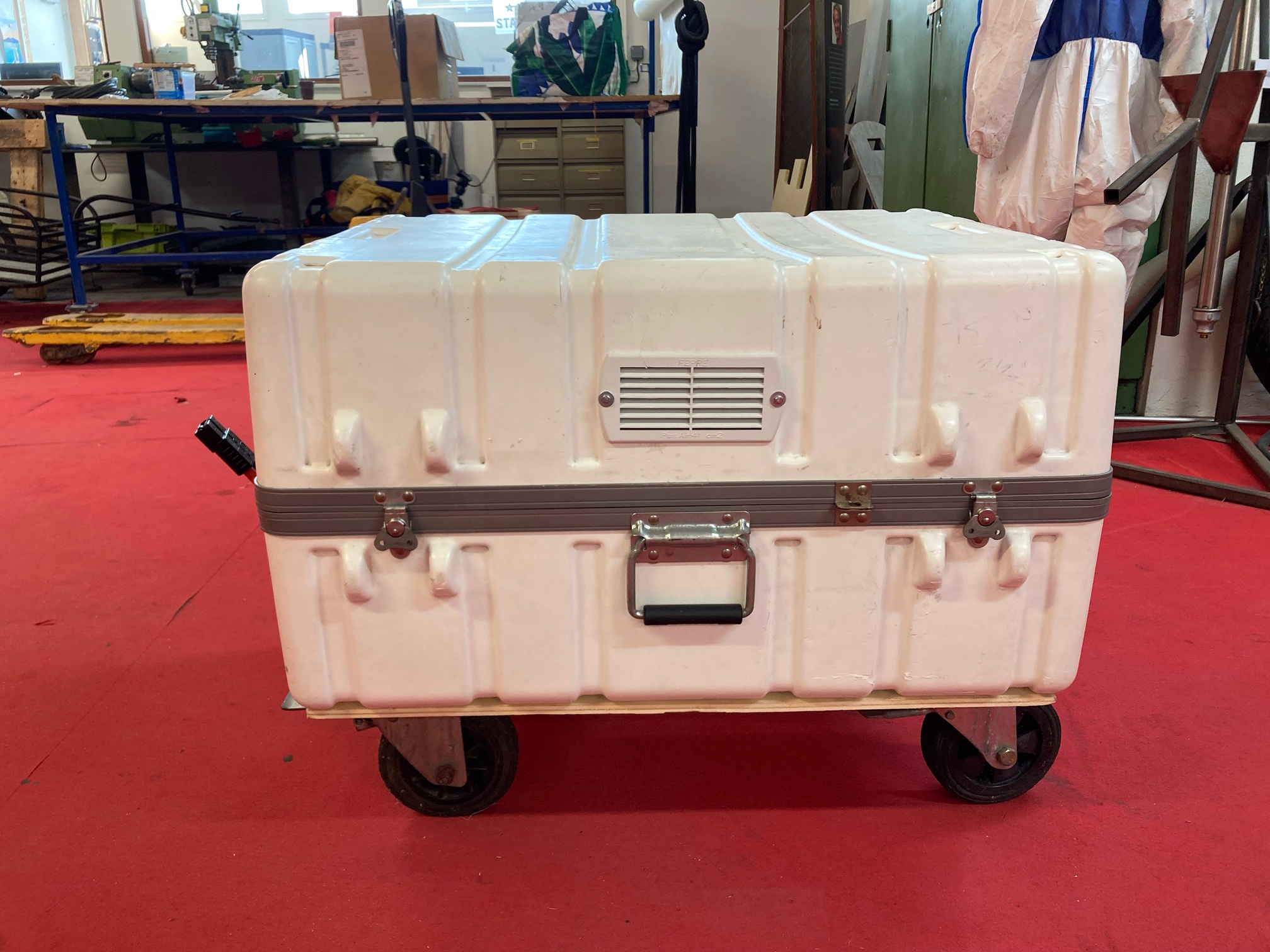
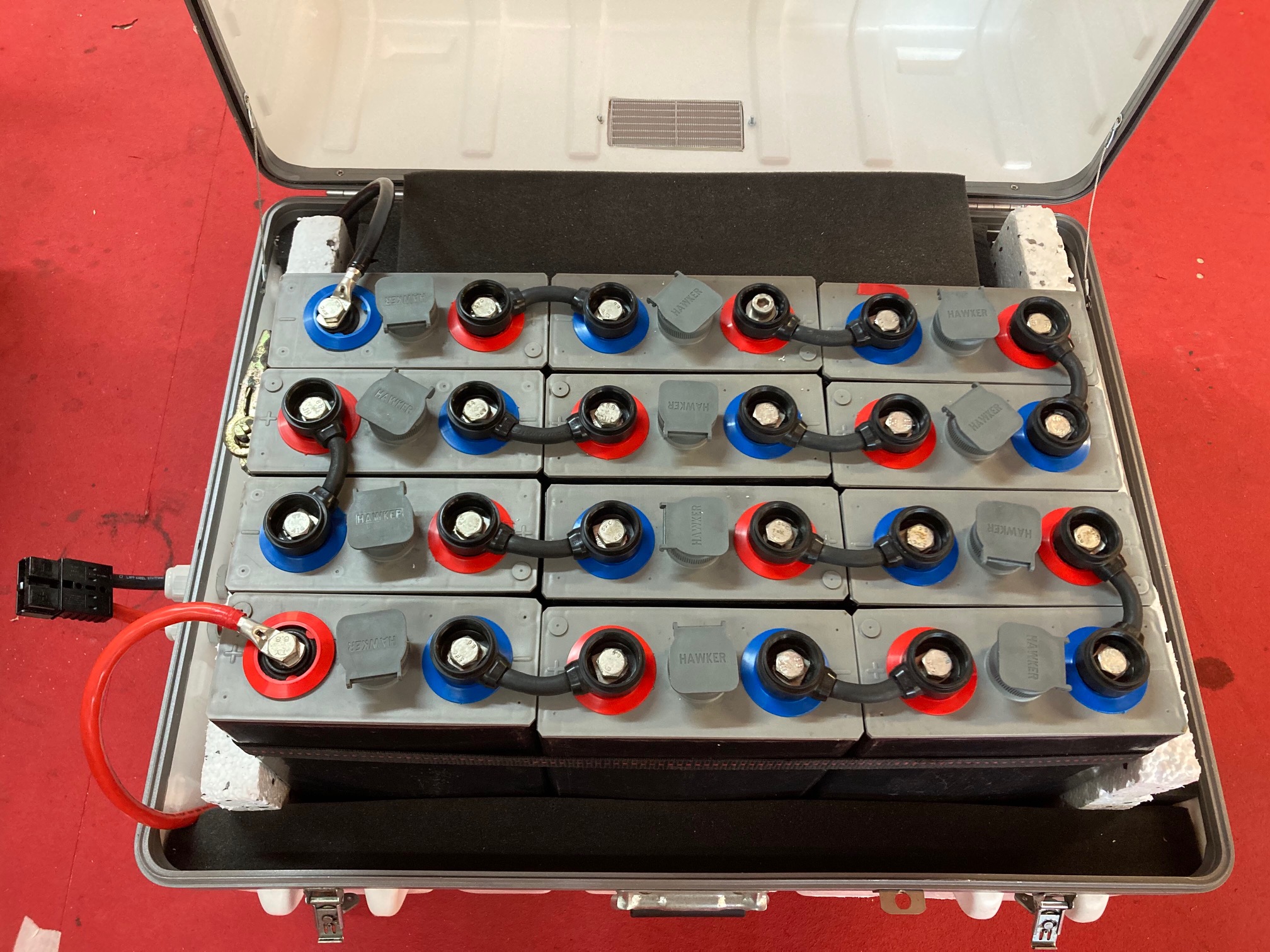
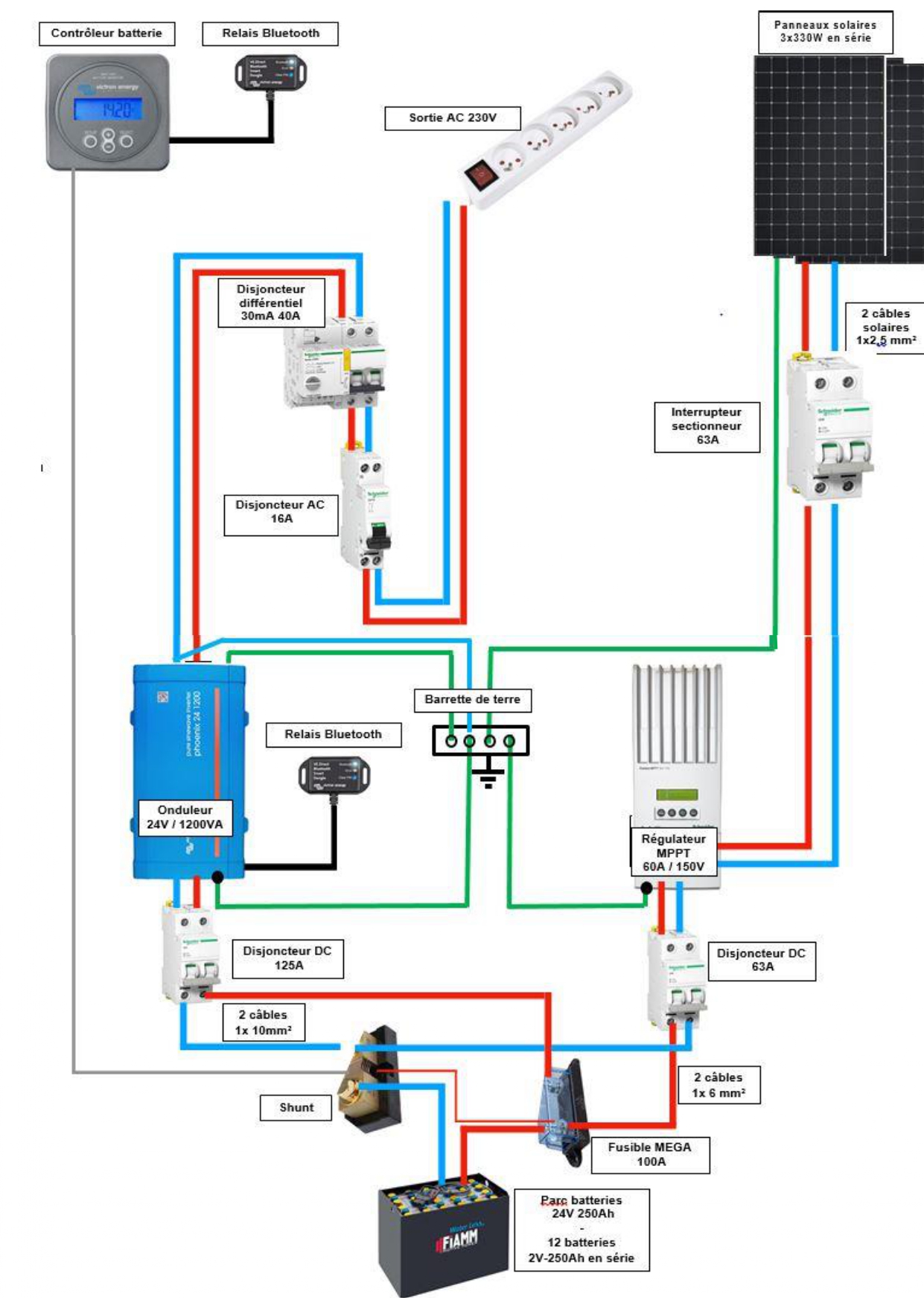
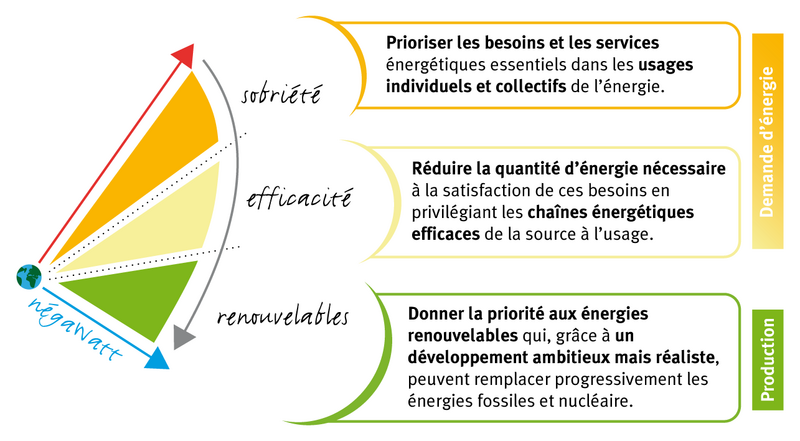
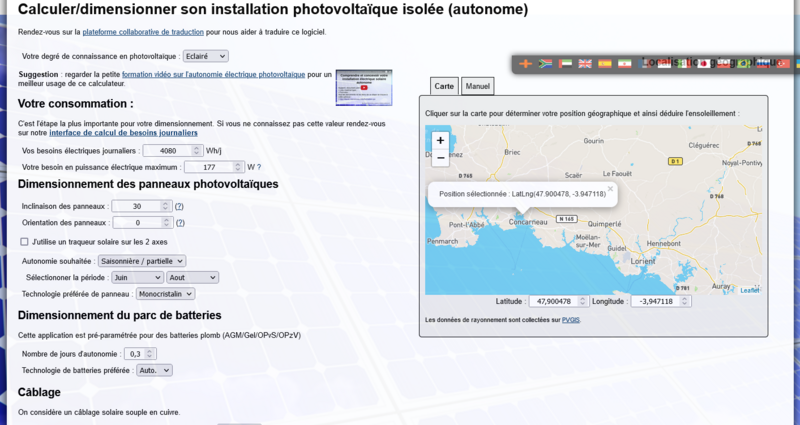
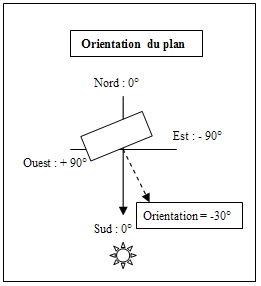
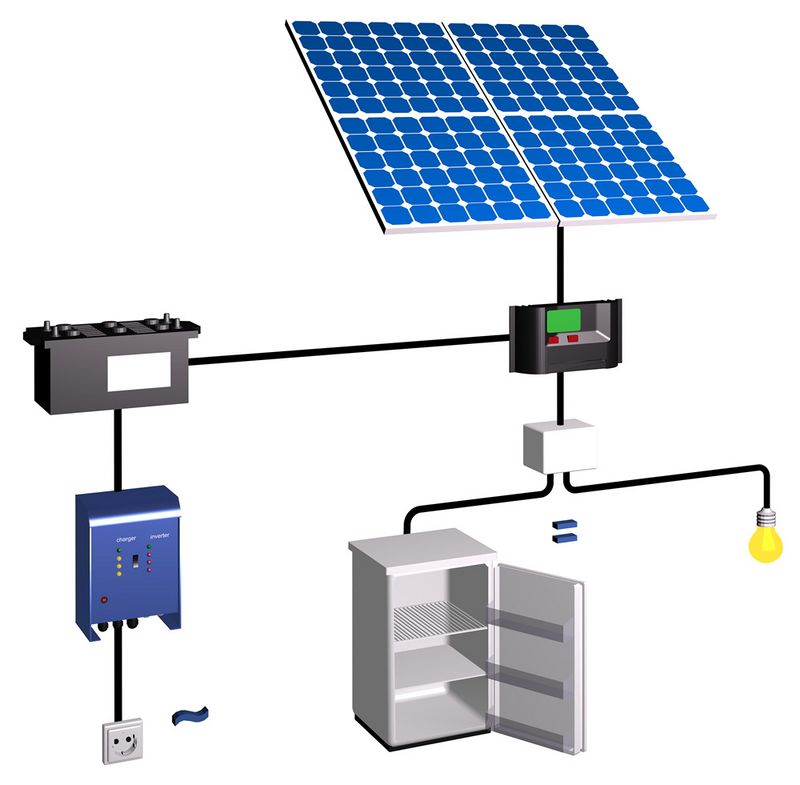
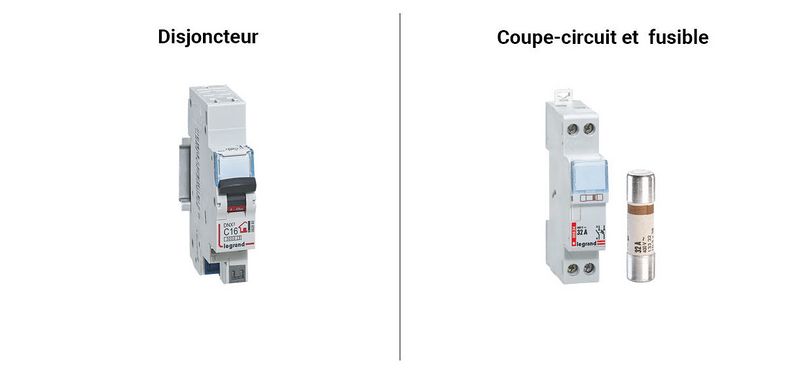
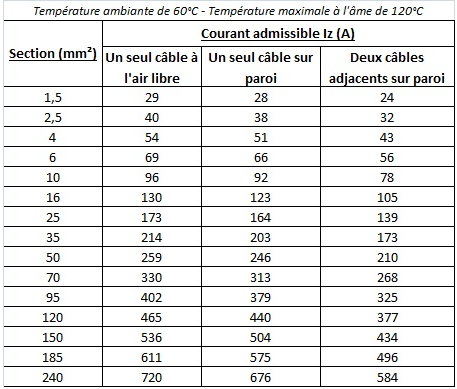
 Français
Français English
English Deutsch
Deutsch Español
Español Italiano
Italiano Português
Português